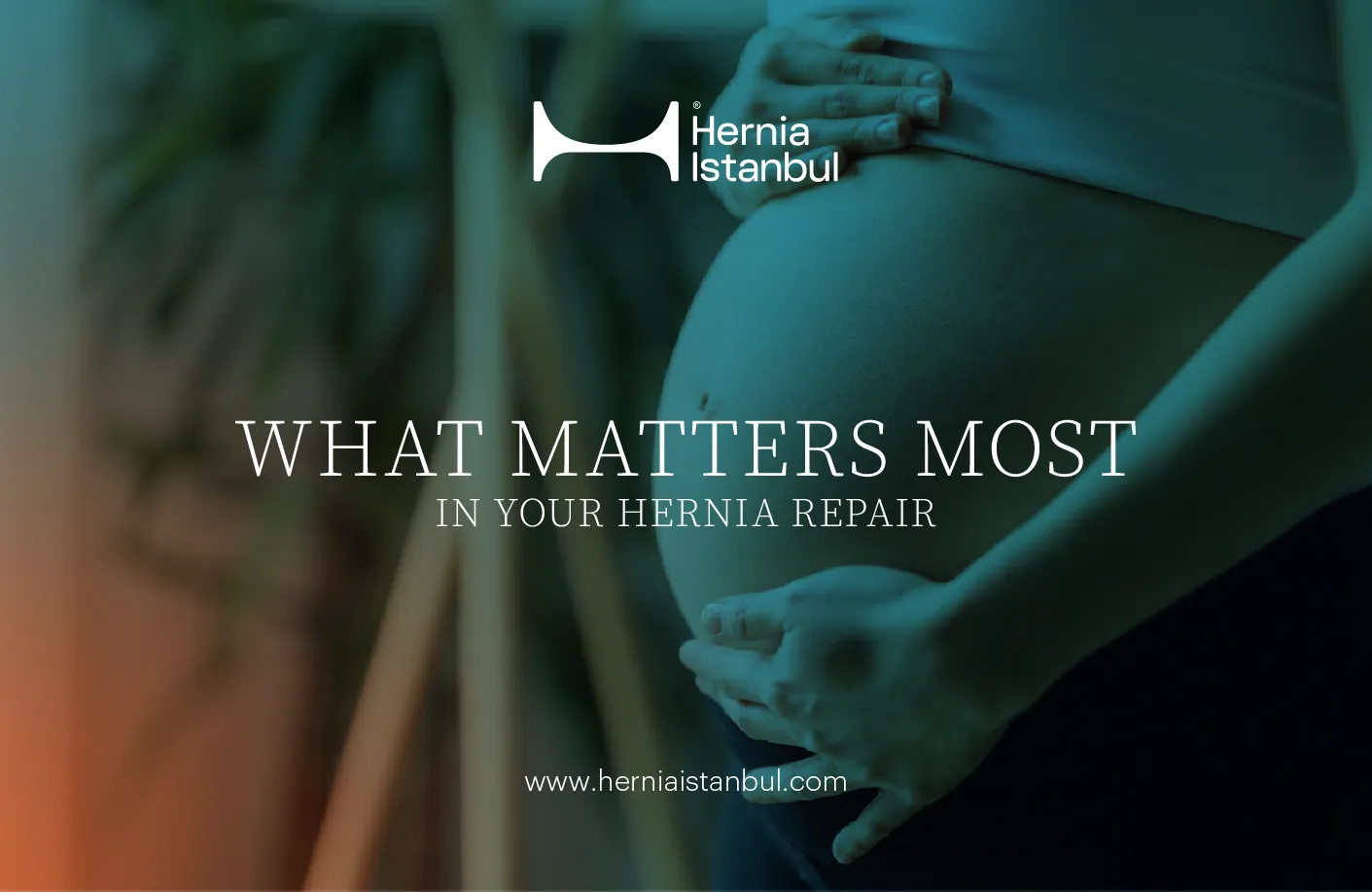
24 Jun 2023 Hernia Surgery in Women of Childbearing Age
Groin hernias account for 75% of all abdominal wall hernias. They are less common in women compared to men, with a prevalence of 3% in women and nearly one out of every four men at risk of inguinal hernia. Umbilical hernias, on the other hand, make up 10% of abdominal wall hernias and are more frequently seen in women.
The repair of primary abdominal wall hernias, such as umbilical hernias, epigastric hernias, and Spigelian hernias, in fertile women raises discussions regarding the timing of surgery and repair techniques. In this article, I will discuss accepted approaches and preferences in this specific hernia patient group.
Firstly, I would like to clarify the definition of fertile women. We practically use this term for women who have the potential to become pregnant and have plans for future pregnancies. The approach to hernia repair may vary in this patient group.
The primary goal in hernia surgery is to prevent recurrence. Subsequently, objectives such as less pain, quick return to daily activities, and good cosmetic appearance follow. From the patient’s perspective, improvement in cosmetic appearance is a priority. In this regard, umbilical hernias stand out. The navel is an aesthetic organ and represents the central position of the body. Any abnormality in this area immediately catches attention. Therefore, the primary complaint of our patients regarding umbilical hernias is aesthetic deformity.
Should umbilical hernias be repaired in women of childbearing age?
Repairing umbilical hernias in women who may become pregnant in the future, regardless of whether they are sutured or repaired with a mesh, carries a higher risk of recurrence. As the abdominal wall expands and contracts during pregnancy, the repaired hernia area may fail to hold the tissues together, leading to hernia recurrence. Mesh repair, in particular, may not adequately cover the weakened area and result in recurrence. The same mechanism applies to patients who have undergone hernia surgery and subsequently gained excessive weight. Therefore, the repair should be performed after the final pregnancy.
What should be done if the hernia is causing symptoms?
If an umbilical hernia is causing pain, incarceration, or increasing in size, a thorough evaluation should be performed, and surgery may be planned. However, it is crucial to inform the patient about the increased risk of recurrence. The options in such cases are as follows:
If the hernia is small (0-2 cm), an open repair with sutures can be considered. If a mesh is used, an onlay or a sublay position may be preferred. The mesh extending 3 cm beyond the hernia defect is sufficient. It is important to note that sutured repair carries a higher risk of recurrence!
For hernia defects ranging from 2 to 4 cm, sutured repair should not be considered. Instead, a long-term absorbed mesh should be used. There are long-term absorbed meshes available today with durations of 6 months to 3 years, showing successful long-term outcomes in some studies. These meshes can be used with the sublay technique or laparoscopic IPOM-Plus technique. However, more clinical studies are needed in this regard, and this recommendation represents an expert opinion.
For larger hernias, such as giant hernias, repair takes precedence, and it may require urgent attention. In such cases, the patient must permanently rule out future pregnancies after undergoing hernia repair.
When should the repair be performed?
The ideal timing is at least 6 months after the last pregnancy. Early repairs may slightly increase the risk of recurrence and complications. The same principle applies to inguinal hernias.
What should be done for groin hernias?
There are no restrictions for repairing groin hernias in women of childbearing age. It can be surgically repaired at any time. We strongly recommend and perform repair using laparoscopic surgical techniques.
Can a hernia be repaired during a cesarean section?
Although it can be done for groin hernias, we do not recommend it. The risk of complications increases! In normal circumstances, we strongly advise and practice laparoscopic repair. Especially umbilical hernias should never be repaired during a cesarean section!
In conclusion, further evidence-based prospective studies are needed. However, our current approach is as stated above. Final word: To reduce the recurrence of umbilical hernias in women, the best time for repair is after the last pregnancy.